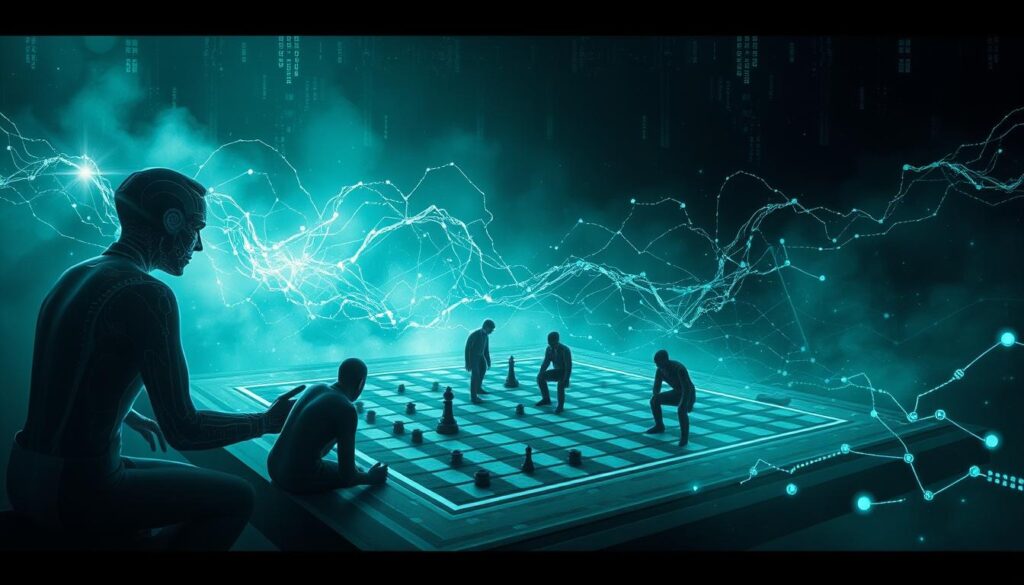In the realm of cosmology, few concepts are as captivating as the idea of parallel universes. While often associated with modern scientific theories and science fiction, the notion of multiple realities has deep roots in ancient belief systems. Hinduism, one of the world’s oldest religions, presents a rich and complex view of the universe—or rather, universes—that shares surprising parallels with contemporary multiverse theories.
Thank you for reading this post, don't forget to subscribe!
The Foundations of Hindu Cosmology
To understand the Hindu concept of parallel universes, we must first grasp some fundamental principles of Hindu cosmology:
- Matter and Spirit: Hinduism distinguishes between the physical, destructible matter and the non-physical, indestructible spirit. The material world is seen as an illusion (maya), while the spiritual realm is considered the ultimate reality.
- Cyclical Existence: The universe is believed to go through endless cycles of creation, preservation, and destruction, represented by the gods Brahma, Vishnu, and Shiva, respectively.
- Layers of Reality: Hindu cosmology describes multiple layers or planes of existence, including various heavens and hells, known as Lokas.
The Hindu Multiverse
The concept of parallel universes in Hinduism manifests in several ways:
1. Cyclical Universes
In Hindu tradition, each universe has a lifespan corresponding to that of Brahma, the creator god. When Brahma dies, the universe is destroyed, only to be reborn anew. This cycle of birth, death, and rebirth creates a temporal multiverse, with each iteration potentially different from the last.
Textual Evidence: The Bhagavata Purana, a sacred Hindu text, describes this cycle: “When Brahma’s day is manifest, this multitude of living entities comes into being, and at the arrival of Brahma’s night, they are all annihilated.” (Chapter 8, Verses 17-20)
Read More: The Cosmic Cycle of Creation, Evolution and Destruction
2. Coexisting Universes
Hindu texts also describe the existence of countless universes simultaneously. These universes are said to float like atoms, each containing its own set of gods (Brahma, Vishnu, and Shiva) and unique characteristics. This concept aligns closely with the modern scientific notion of a spatial multiverse.
Textual Evidence: The Bhagavata Purana provides vivid descriptions of multiple universes: “After I saw the entire universe, Lord Krishna, the master of mystic power, at once expanded Himself into many forms. I saw numerous forms of Krishna showing the unlimited potency of Godhead. With various heads, arms and legs, wearing various dresses and ornaments, and wielding various weapons, Lord Krishna exhibited His transcendental forms as the Supreme Personality of Godhead. I saw Him displaying infinite, countless universes, each containing an infinite number of planets and each inhabited by exalted demigods, headed by Indra.” (Bhagavata Purana 10.14.32-34)
3. Nested Universes
Some Hindu myths suggest that universes can exist within other universes, creating a nested structure of realities. This idea adds another layer of complexity to the Hindu multiverse concept.
Textual Evidence: The concept of nested universes is vividly illustrated in the story of Krishna and Brahma in the Bhagavata Purana. When Brahma doubts Krishna’s divinity, Krishna opens His mouth, revealing countless universes within him, each with its own Brahma. Some Brahmas had 10 heads, some had 100 & even 1000 heads. Within a moment all Brahmas returned back to their respective universes as Krishna asked them to do so.
4. The Fourteen Lokas
Hindu cosmology describes fourteen primary worlds or Lokas—seven upper worlds (heavens) and seven lower worlds (hells). These Lokas represent different planes of existence, each with its own characteristics and inhabitants. While not parallel universes in the strictest sense, they contribute to the multidimensional nature of Hindu reality.
Textual Evidence: The Vishnu Purana details the structure of these Lokas: “The seven Lokas are Bhur, Bhuvar, Svar, Mahar, Jana, Tapa, and Satya. The seven Patalas are Atala, Vitala, Sutala, Talatala, Mahatala, Rasatala, and Patala.”
14 Lokas as mentioned in Hinduism
Spiritual Implications
The Hindu concept of parallel universes is not merely a cosmological model but also carries profound spiritual significance:
- Path to Enlightenment: Understanding the nature of multiple realities is seen as a step towards spiritual enlightenment, helping individuals see beyond the illusion of the material world.
- Karma and Reincarnation: The existence of multiple universes provides a framework for the concepts of karma and reincarnation, with souls potentially traversing different realities based on their actions.
- Unity in Diversity: Despite the vast multiplicity of universes, Hindu philosophy emphasizes the underlying unity of all existence, embodied in the concept of Brahman, the ultimate reality.
Textual Evidence: The Bhagavad Gita, one of the most revered Hindu texts, alludes to this unity: “I am the source of all spiritual and material worlds. Everything emanates from Me. The wise who perfectly know this engage in My devotional service and worship Me with all their hearts.” (Bhagavad Gita 10.8)
Parallels with Modern Science
Interestingly, some aspects of Hindu cosmology bear resemblance to modern scientific theories:
- The cyclical nature of universes echoes theories like the Big Bounce, which proposes that the universe goes through repeated cycles of expansion and contraction.
- The concept of multiple coexisting universes aligns with various multiverse theories in contemporary physics.
- The idea of nested universes finds parallels in some interpretations of string theory.
Conclusion
The Hindu concept of parallel universes offers a rich tapestry of ideas that blend cosmology, spirituality, and philosophy. While rooted in ancient traditions, these concepts continue to fascinate and inspire, providing a unique perspective on the nature of reality. As we continue to explore the cosmos both scientifically and spiritually, the Hindu multiverse serves as a reminder of the vast possibilities that may exist beyond our immediate perception, urging us to look deeper into the nature of existence itself.
The abundance of textual evidence from ancient Hindu scriptures demonstrates that these ideas of multiple universes and realities have been an integral part of Hindu thought for millennia. These concepts not only provide a complex cosmological model but also serve as a framework for spiritual growth and understanding, inviting us to contemplate our place in the vast tapestry of existence.













